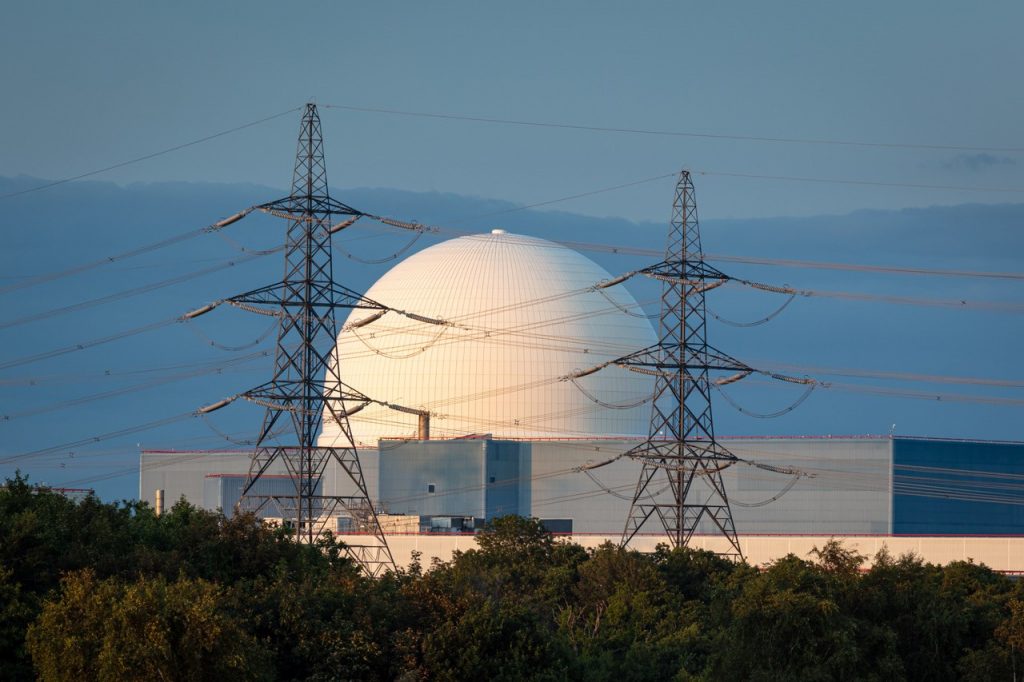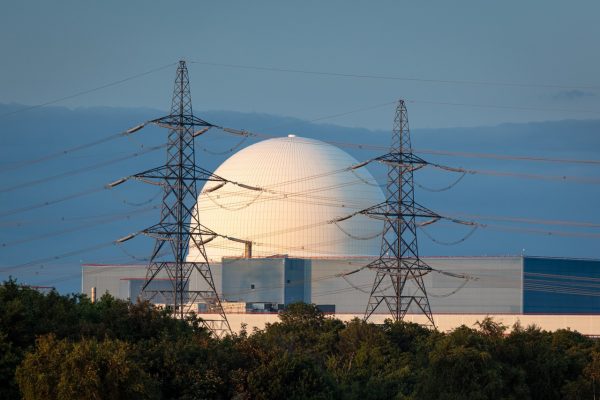
Bogeyman or tomorrow’s saviour? Sizewell nuclear reactor.
Those of us who are tootling gently along in our electric cars felt smug when we passed fuel queues—but how long will we be able to plug into electricity as the days roll over to what could turn out to be the worst winter of discontent since the 1970s, with fuel shortages leading to rising prices and even three-day weeks or factory closures? And what is the real price of new energy—is it worth the political capital of being on the right side of being green?
Is it worth it?
A global effort to transition to 100 percent renewable energy by 2050 would cost nations $73 trillion according to a 2019 report from Stanford University. it’s more than $2 trillion annually, or more than the GDP of many industrialized nations.
Current figures for British wind farms are eyewatering. The costs for a utility scale wind turbine range from about $1.3 million to $2.2 million per MW of nameplate capacity installed. Most of the commercial-scale turbines installed today are 2 MW in size and cost roughly $3-$4 million installed.
Let’s look at some of the stats for actual offshore wind farms. They don’t seem hugely productive and, unlike Shell, none of them are household names.
- Barrow, 90 MW for £123 million
- Gwynt y Mor 576 MW for >£2,000 million
- Sheringham Shoal 317 MW for £1,100 million
Robert LaCount of Cambridge Energy Research Associates said governments would have to bite the bullet and bear much of the cost. Only nations with their deep pockets could take the risks required to turn risky technologies from pipe dreams into reality.
About turn?
Boris Johnson agreed back in December 2012 when he wrote in The Telegraph: “It [fracking] is glorious news for humanity. It doesn’t need the subsidy of wind power. I don’t know whether it will work in Britain, but we should get fracking right away.”
In the same year, he repeated that earthquakes which were said to be triggered by the fracking were normal, and said critics “cannot bear a piece of unadulterated good news”.
Yet, when it came to securing wind turbines, Johnson said there could be no justification for “crucifying our landscape with wind farms which, even when they are in motion, would barely pull the skin off a rice pudding.”
Whats changed?
Cameron Rose writing in last week’s Spectator and referring to Seb Kennedy’s article on China hoarding gas, tells us that, “like Covid, our looming energy crisis came from China (‘Power grab’, 9 October). [But] Its roots are nearer home. The capitulation of successive governments to doom-mongers such as Insulate Britain and the catastrophists who are due to fly to Glasgow in a few weeks for COP26 are just as much to blame. Britain has sufficient shale gas reserves to last hundreds of years, yet in the face of a few illegal demonstrations, the government abandoned the opportunity to secure gas supplies for generations to come.
It caved in to those who opposed planning permission for shale mines in Lancashire and elsewhere.
The naivety of aspiring to net zero without a realistic and costed transition plan is now hitting home. Perhaps COP26 presents the opportunity to tone down the rhetoric and adjust policies to reality.
I’m not counting on it.”
Despite this, the government has just refused Royal Dutch Shell permission to develop the Jackdaw gas field in the North Sea. Dr John Constable, the Global Warming Policy Forum’s energy editor said: “Refusing permission for national gas production in the middle of a gas import crisis is a bizarre decision and seems to be driven by the short-term optics of COP26 rather than the public interest and a rational approach to low-cost development. Energy policy is too important to be driven by virtue signalling…

And if Mr Putin decides to provide short term gas contracts for the UK, directly or indirectly, this winter, it will because he calculates it to be in his interests, not the UKs.
Relyng on Russia as a provider of last resort for gas should not form part of the energy strategy of a responsible government!
What about the nuclear option? Reports suggest that up to 15 applications to participate in COP26 from bodies in the nuclear industry were rejected by Sharma’s team in the Cabinet Office, shutting out an important line of discussion in the climate debate.
How short sighted is that?? – But things maybe about to change, whether Alok Sharma likes it or not!
Gillan Tett writing in the FT tells that Rolls-Royce, the British engineering group, is organising a consortium in conjunction with a US group, IPG, to install more than a dozen so-called “small modular reactors” (SMRs) across Britain. They hope to get £210m from the UK government to fund this. There is more to read about this here.
And in today’s (16 October 2021) FT is a report that nuclear power is to be at core of national net zero strategy, with details to be released as early as next week.
Just in time – although, may not soon enough to keep the lights on through winter 2021. But if we believe “The highest priority for any sovereign government is the protection of its citizens from danger – foreign and domestic” then we have to break the compromise with which we have so casually allowed China a foothold into the UK’s energy market argue Dr Liam Fox and former US National Security Advisor, Robert McFarlane, in the Daily Mail.
Discussing the benefits of SMRs, Dominic Frisby writing in MoneyWeek and quotiing Dr Philip Bratby, author of “Small Modular Reactors – an opinion piece” says: “They use very high energy-density fuel and thus require a lot less land. A 440 megawatt (MW) SMR would require about 25 acres of land and produce about 3.5 terrawatt hours (TWhs) of electricity per year, enough for about 1.2million homes.
A solar farm would require about 13,000 acres (20 square miles) for the same output; windfarms would need approximately 32,000 acres (50 square miles).
Shortages Loom
There is no question there is a real risk of a serious shortage of gas this winter, says Mattnew Lynn in The Spectator. The price of every form of energy has rocketed in the past six months, but gas most of all. At the start of September, if you were in the market for a thousand cubic meters of gas, the standard trading unit, you could get one for just over $500. By the middle of the month, that had jumped to $800, and by its close it was above $1,000, an all-time high. By Tuesday (last week), gas prices were up another 23 per cent.
That matters. In the UK, 87 per cent of homes rely on gas for heating, up from 45 per cent in 1975, the last time there was a major energy crisis. Most rely on it for cooking as well.
Whether you are planning to cook a gourmet dinner for friends or working out how much energy increases will cost your company, you need an easy-to-use budgeting and forecasting program like Forecast 5. One that intergrates effortlessly into popular accounting packages like Xero, Sage50, Sage300 and SAP B1
Try it for yourself with our 21 day free trial.
Credit for the cartoon: Thanks to Josh and the Global Warminig Policy Forum
